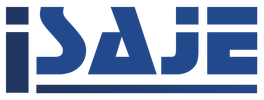At crisis times when the discussion about the appropriate treatment model for addiction is thriving we decided to present this interview of Juan Parés y Plans (Corelli). Juan Parés y Plans was the vice-president of the most successful addiction treatment program in Italy, CeIS (Centro Italiano di Solidarietà), Rome, for a number of years. Juan Parés y Plans gave this interview to Eric Broekaert, professor of Orthopedagogics at Ghent University also a pioneer in the therapeutic communities in Belgium.
In this interview, Corelli reminds us of the European origins of treatment programs, developed under the influence of the democratic milieu- oriented psychoanalytical T.C. in the early 40s. He also talks about the American hierarchic drug-free concept T.C. spread out in the US represented by the pioneering TCs such as Daytop Village, Phoenix House and Odyssey House influenced CeIS.
Reading his interview there are a few points, very relevant to today’s situation that immediately stand out. The first point emphasizes the humanistic approach to treatment and organization management. The second, concerns staff members’ reinforcement to develop a critical eye, a space of free movement for to allow, accept, discuss and learn from mistakes. As Corelli said: “…It is not healthy when you are not allowed to analyse your mistakes in order to learn from them…”.
Corelli also described the necessity to create a non-bureaucratic work environment and we quote: “The first thing I did was – in a way – milieu- therapy. I took away the offices. There were no desks anymore, so you could not work alone. You had to work with the groups”.
According to Broekaert, CeIS may be considered as a perfect example for the development of European TCs under the influence of pioneers in group psychodynamics, such as Maxwell Jones and Harold Bridger. Harold Bridger was for many years KETHEA’s supervisor. Concepts like “social learning” and “the organization as a whole” maintain their importance when trying to understand the main characteristics of any therapeutic community. The authors conclude their article, focusing on the conditions sine qua non for change, which seem to be essential for the development of any type of organization. Some of these conditions are highly relevant today. We offer them to you hoping to contribute to the quest for further development of the drug addiction treatment model and the relevant organisations.
- Open dialogue at all hierarchical levels
- Understanding the external environment and the current crisis
- Client-centered
- The process of change as more important than the outcome
- Facilitation of TC development towards an open system
- Emphasis on living-learning experiences
- Elimination of bureaucracy
I hope that you will enjoy this volume as much as we did.
The editorial Group




